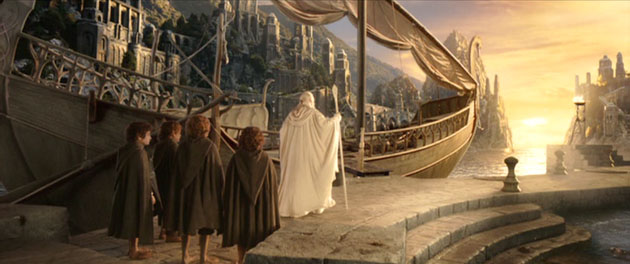Grant Major

AS: How did you get that first job?
GM: Back then they guaranteed everyone a job who went to the institution. Long gone are those days. It was based around the end-of-year exhibition. They would have a lot of people from the advertising industry, publishing, and interior design companies come to these exhibitions and meet us and hand-pick the people they wanted. I was offered several jobs out of that, including advertising, but I didn’t really want to do that. What I actually wanted to do at the time was move on to fine arts. I thought I would earn some money for a year or so before going back to university and getting a fine arts degree. But when I went into TV at that point it was such a good way to earn a living. And since I was earning a living at it I just kept at it.
AS: After working at the BBC you returned to New Zealand to get into the film industry there?
GM: I actually came back to New Zealand by accident rather than by design. I had a full-time job at the BBC back then. I came back to New Zealand on a holiday to catch up with my family. I’ve ended up staying here because a lot of my friends who I’d been working with in TV back in the 70’s were now in the film business. Television was sort of disintegrating. They didn’t have in-house design departments anymore and they didn’t have drama departments – all those things were split off from the TV companies I had worked for. It coincided with one or two very early New Zealand films that hadn’t done badly. Sleeping Dogs was one of them, by director Roger Donaldson who’s still up in Hollywood directing films. It attracted peoples’ attention to the possibility of making films in New Zealand. The government responded by doing this sort of tax dodge. Tax dodge schemes financed films back then.
So there were a certain amount of films being made. Not a huge amount. I wasn’t able to make a living out of doing films all the time. I had to diversify -doing a little bit of graphic work, doing some event design and things like that. I worked on the New Zealand pavilions for the world exhibitions in Australia and in Spain. Things like that helped supplement the beginning of my film career.
AS: Now that you’ve worked in both places, what would you say is the difference between working in New Zealand and working in Hollywood?
GM: Immediately the scale difference is apparent. Hollywood is the capital city of this sort of thing. In New Zealand when a Peter Jackson film is being made it consumes pretty much everybody who’s in the industry here. Which is good because I know everybody –we’ve worked with each other years and years. In America the stakes are a lot higher. I am competing with a lot of people who are way better at designing than I am. All I can do is learn by looking at overseas publications and at films that come in from overseas. In America it’s brilliant because it’s got this film making culture that is so much deeper. For example, I ran into people there who are second, third generation standby props people. There’s that sort of history there. There are also the guilds and the unions there that promote the industry side of things. They have lessons on the latest IT and CGI techniques in filmmaking and they run art classes. While I was up there I managed to socialize with other production designers who have done the most incredible films, the most awesome projects. You can imagine someone coming from a place like Winchester, Illinois and going to New York, it’s the same sort of experience. It’s really amazing and I hope I get the opportunity to be invited back.
Tom, this is a wonderful blog, thanks for the info.
Do you have any advice for aspiring production designers? I live in Philadelphia and recently finished architecture school but I very much want to design films.
Glad to hear you like the blog! The best advice I’ve found is to just get out there and start doing it. Work on low budget videos, short films, commercials, anything you can get your hands on for low money. A lot of these directors will call you when they start doing features. And then call you again when the features get bigger budget. K.K. Barrett started with commercials and music videos for Spike Jonze, Grant Major started on smaller movies with Peter Jackson, and Jack Fisk rented a van and brought his own tools out to Colorado to go do Terence Malick’s Badlands. He not only found an auteur to work with throughout his career, he also met his future wife, Sissy Spacek.
Also, you may want to move to LA or New York or anywhere there are schools like USC, AFI, NYU where talented directors are just starting out and looking for designers….
Pingback: STH032: Gandalf the Stern « SQPN: Secrets of The Hobbit
Thanks so much for the response.
I’m actually working on a short film with an old friend of mine who just graduated from USC and is trying to become a director so I guess I am on the right track! He lives in and will be shooting the film in San Diego but we’ve been able to work together so far by way of email and it’s been a lot of fun. I guess I will see what comes of it! If nothing else I’ll have some material to add to my portfolio.
Thanks again!
Pingback: Laurence Bennett
Pingback: Rick Heinrichs
Pingback: STH032: Gandalf the Stern - SQPN.com